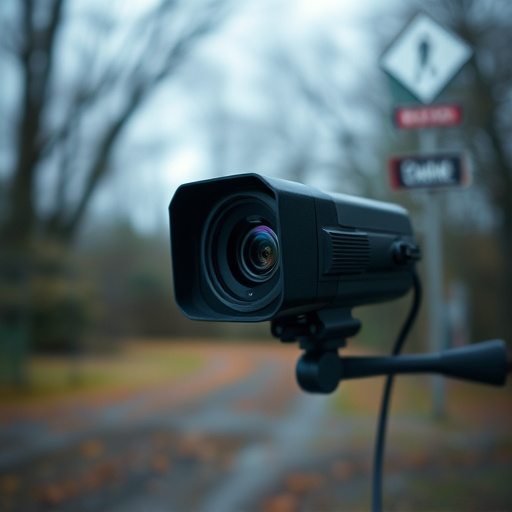The Invisible IR Camera leverages infrared technology for superior night vision and discreet home monitoring, capturing heat signatures in darkness. While offering enhanced security, its deployment requires navigating privacy regulations, setting boundaries, and obtaining consent to avoid legal issues and respect individual privacy rights. Optimal placement in high-traffic areas ensures effective surveillance without detection, providing clear images and peace of mind.
In today’s digital age, covert recording has become a tool for both personal security and legal investigations. This comprehensive guide explores the art of identifying hidden spots using advanced technology like the invisible IR camera. From understanding the legal implications of covert recording to mastering the science behind infrared cameras, we delve into effective strategies for home monitoring. Learn ethical considerations and best practices to ensure responsible use of these powerful tools. Discover how an Invisible IR Camera can enhance your safety measures.
- Understanding Covert Recording and Its Legal Implications
- The Science Behind Invisible IR Camera Technology
- Identifying Potential Spots for Home Monitoring Using IR Cameras
- Ethical Considerations and Best Practices for Covert Recording
Understanding Covert Recording and Its Legal Implications
Covert recording, also known as hidden camera surveillance, is a practice that involves capturing images or videos secretly and often without the knowledge or consent of those being recorded. This method has become increasingly common with advancements in technology, particularly with the emergence of invisible IR cameras designed for home monitoring. These devices can capture high-quality footage in low-light conditions, making them excellent tools for covert observation.
However, it’s essential to understand the legal implications surrounding covert recording. In many jurisdictions, capturing images or videos of individuals without their knowledge is a violation of privacy laws and can lead to serious legal consequences. The use of invisible IR cameras for home monitoring must adhere to specific regulations, ensuring that they are only employed in private spaces and with proper authorization. Individuals should be made aware of the presence of such surveillance equipment to ensure transparency and respect for personal privacy rights.
The Science Behind Invisible IR Camera Technology
The Invisible IR Camera, a cutting-edge technology in home monitoring, operates on the principle of infrared (IR) radiation. This technology captures and records heat signatures, invisible to the human eye, transforming them into visual images. By utilizing IR sensors, the camera detects thermal energy emitted by objects and individuals, allowing for detailed, clear footage even in complete darkness or low-visibility conditions.
This innovative approach offers a discreet and highly effective solution for home security. Unlike traditional cameras that rely on visible light, IR cameras exploit the infrared spectrum, ensuring unnoticeable operation while providing superior night vision. The technology has become a game-changer in surveillance, enabling users to monitor their homes with unparalleled discretion and efficiency, making it an ideal choice for those prioritizing privacy and security in their living spaces.
Identifying Potential Spots for Home Monitoring Using IR Cameras
Identifying potential spots for home monitoring using invisible IR cameras is a strategic process that involves understanding the unique capabilities of this technology. Infrared (IR) cameras capture heat signatures, allowing them to see in complete darkness and detect subtle temperature variations. This makes them ideal for covert recording and home security. When planning your setup, consider areas with high foot traffic, such as entryways, hallways, or common living spaces, where IR cameras can discreetly monitor activities without being noticed.
By strategically placing these cameras, you create a comprehensive surveillance system that enhances your home’s security. Invisible IR cameras offer a non-intrusive way to observe and record activities, providing peace of mind and valuable evidence in case of any suspicious or unauthorized access. Their advanced technology ensures clear images even in low-light conditions, making them an effective tool for around-the-clock monitoring.
Ethical Considerations and Best Practices for Covert Recording
When employing covert recording methods, such as an invisible IR camera for home monitoring, it’s imperative to navigate a delicate ethical landscape. Respecting privacy is paramount; setting clear boundaries and obtaining informed consent when possible are foundational best practices. Transparency about surveillance systems can help alleviate concerns among individuals in the monitored environment.
To ensure responsible use, practitioners should adhere to legal frameworks governing surveillance. This includes understanding local laws regarding hidden cameras, audio recording, and data storage. Additionally, secure data management protocols must be in place to safeguard personal information captured on these recordings, balancing security with access control to prevent unauthorized viewing or misuse.
Covert recording, while offering valuable insights for home monitoring through innovative tools like invisible IR cameras, necessitates a careful balance between security needs and privacy rights. As we’ve explored in this guide, understanding both the technology and legal implications is crucial. When employing methods like IR camera spot identification, it’s essential to adhere to ethical considerations and best practices, ensuring that privacy is respected while leveraging the benefits of advanced home monitoring solutions. By staying informed and responsible, individuals can navigate the landscape of covert recording effectively.
